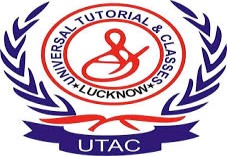Full form of GRE
GRE or Graduate Record exam is a standardized test conducted by ETS (Educational Testing Services). Most of the top graduate level schools for master’s degree programs accept this exam. Over the years, it has seen many changes. In its newest version, it is called the GRE revised General Test.
According to Ezassignmenthelp, the GRE aims to measure verbal reasoning, quantitative reasoning, analytical writing, and critical thinking skills that have been acquired over a long period of learning.
The content of the GRE includes certain specific algebra, geometry, arithmetic, and vocabulary. The GRE General Test is offered as a computer-based exam administered at Prometric testing centers.
GRE Exam Eligibility
The only eligibility requirement for GRE is the document required to prove your identity. In India, you’ll need a valid passport. You’ll have to get your original passport (not photocopies) which clearly shows your full name, photograph and signature.
No other documentation (like birth certificate, international driving license etc.) can be used as an alternate identity proof. They are very strict about this.
Apart from this eligibility requirement, ETS does not set any age, qualification, timing related pre-requisites. However, there will be a range of eligibility criteria set by universities that accept GRE scores. For each of their programs, they may have a minimum age, experience and qualification related filters.
| Sections | Number of Questions | Allotted Time |
| Analytical Writing | · Analyze an Issue task
· Analyze an Argument task |
30 minutes per task |
| Verbal Reasoning
(2 Sections) |
20 questions per section | 30 minutes per section |
| Quantitative Reasoning
(2 Sections) |
20 questions per section | 35 minutes per section |
| Unscored | Will vary | Will Vary |
| Research | Will vary | Will Vary |
Full form of ACT
ACT or American College Testing is the leading US college admissions test measuring what you learn in high school to determine your academic readiness for college. Candidates are required to go through four distinct tests: English, Math, Reading, and Science are given below.
Fast Facts related to ACT exam pattern 2018
| Total Duration | 2 hours and 55 minutes |
| Exam Format | Two formats- ACT (no writing)
ACT (with writing) |
| Number of Questions | 215 or 216 (One extra essay question for ACT with writing) |
| Type of Questions | Multiple-choice questions (MCQ) |
| Testing Subjects | English, Mathematics, Reading, and Science |
| Other information | Additional 40 minutes is given to candidates who opt for ACT (with optional essay writing) |
Full form of GMAT
The Graduate Management Admission Test or GMAT is a computer-adaptive test. It is intended to assess a student’s analytical, writing, quantitative, verbal and reading skills in formal or standard written English. It is for use in admission to a graduate management program, such as an MBA and Masters in Finance related courses.
Computer adaptive test
The GMAT exam is a computer adaptive test and not a computer-based test. Here the candidate gets one question at a time. And depending on the accuracy of the previous answer, the difficulty level of the next question will be ascertained. The average scores required for universities abroad varies; top-tier universities require at least 710, while middle-tier universities accept 600.
For Executive MBA
GMAC has recently introduced a new Mini GMAT called Executive Assessment exam for Executive MBA. Specially designed for EMBA applicants, this exam is of considerably shorter duration. It is meant to test analytical and logical thinking of the applicant, which is more suited for the Executive MBA course.
GMAT Fees
The application fee for GMAT 2018 is $250, which roughly converts to Rs 15,000-16,000 approximately. In case the applicant wants to get his centre changed or reschedule the test then he/she will be charged $50 extra.
GMAT Paper-Pattern
The GMAT exam pattern consists of mainly four sections. These sections test the candidate’s’ abilities on various parameters, such as Writing, Reasoning, Verbal and Quantitative skills. The GMAT exam is conducted in a time span of 3 hours and 30 minutes. GMAT scores are given with an increment of 10 points for example 550, 560, 570 etc.
Here is the GMAT 2018 paper pattern
| Section | No. of questions | Question Type | Duration |
| Analytical Writing Assessment | 1 Topic | Analysis of an Argument | 30 minutes |
| Integrated Reasoning | 12 questions | Multi-Source Reasoning, Graphics Interpretation, Two-Part Analysis, Table Analysis | 30 minutes |
| Quantitative | 37 questions | Data Sufficiency, Problem Solving | 75 minutes |
| Verbal | 41 questions | Reading Comprehension, Critical Reasoning, Sentence Correction | 75 minutes |
| Total Exam Duration | 3 hours 30 minutes |
Update: The Graduate Management Admission Council (GMAC) recently announced the upcoming launch of Select Section Order, a new feature that will provide candidates the flexibility to customize their GMAT experience by choosing the section order in which they feel most comfortable taking the exam. GMAC believes this new exam feature has offered greater control and flexibility to a candidate.
Full form of IELTS
IELTS (International English Language Testing System) is the world’s most popular English language test. More than 3 million IELTS tests are taken each year. Qualifying IELTS opens doors – it can help a student live, study and work in countries like the USA, UK, Ireland, Canada, Australia, New Zealand etc.
More than 10,000 organizations in 140 countries accept IELTS, including schools, universities, employers, immigration authorities and professional bodies. IELTS assesses all of student’s English skills, whether it be reading, writing, listening or speaking. It is designed to reflect how a student will use English at study, at work, and at play, in his or her new life abroad.
Here is all you want to know information about IELTS Test 2018 related to eligibility criteria, test dates, registration process, application process, syllabus, exam pattern, result and selection procedure.
IELTS Eligibility Criteria 2018
There are no specific IELTS 2018 eligibility criteria set by the conducting bodies of IELTS. Any individual who wants to pursue higher studies abroad or seeking an opportunity to work in any one of the foreign countries that require English language proficiency can apply for IELTS 2018. IELTS Academic scores are accepted by universities or institutions. Therefore, a candidate is required to check the eligibility criteria for the institution or organization he/she wishes to be associated with as individual organizations have different requirements.
IELTS Syllabus 2018
IELTS 2018 has two formats:
- IELTS Academic
- IELTS General
Both the formats come with of four mandatory sections, like listening, reading, writing and speaking. While Listening and Speaking are the same for both the formats, the subject matter of the Reading and Writing components differ depending on which test one opts for.
IELTS 2018 test is designed to reflect the use of English language in our daily lives; at work, at play and study. The results of IELTS 2018 are scored on a unique 9-band scale.
The main purpose of these two versions or formats of IELTS are distinct, hence one should be cautious while registering for the test. A specific version can be selected depending on the institution or organization a student wishes to apply to.
Difference between IELTS Academic and IELTS General Training
| Suitable IELTS Test version | Purpose |
| IELTS Academic | Study at university at an undergraduate or postgraduate level, join a professional organization that requires English language proficiency test scores. |
| IELTS General Training | Study at below degree level, work or undertake work-related training, and for emigration purpose. |
IELTS Test Pattern 2018
The total duration of IELTS test is 2 hours 45 minutes. Listening, Reading and Writing sections are conducted one after the other while speaking test is scheduled on the same day or within seven days before or after the test. While every candidate must take similar Listening and Speaking modules, the Reading and Writing modules differ for the two formats called IELTS Academic and IELTS General Training.
To learn more about the IELTS test pattern and also assess your readiness, take an online IELTS mock test and get a detailed test report.
IELTS 2018
The speaking test will be conducted as a one-on-one test to assess candidates’
- English fluency
- Coherence
- Pronunciation
- Grammatical accuracy
The responses are recorded by the examiner for analysis and scoring purpose. The candidates are put through a real-life conversation with a real person to get their English conversation skills tested.
Four sections of IELTS 2018 test
| IELTS Test Component | Duration | Brief Description |
| Listening | 30 minutes | 4 sections, 40 items |
| Reading | 60 minutes | 3 sections, 40 items |
| Writing | 60 minutes | 2 tasks |
| Speaking | 11–14 minutes | One-on-one conversation divided into three parts |
Full form of TOEFL
TOEFL or Test of English as a Foreign Language is a standardized exam to test the spoken and written English abilities of non-native speakers wishing to enroll in English-speaking universities. The test is accepted by many English-speaking academic and professional institutions. TOEFL and IELTS are the two major English-language tests in the English-speaking world.
Educational Testing Service (ETS), a private non-profit organization, designs and administers the TOEFL tests. ETS issues official score reports, sent independently to institutions, for two years following the test.
TOEFL Internet-based test
Since its introduction in late 2005, the TOEFL Internet-based Test (iBT) format has replaced the computer-based tests (CBT) and paper-based tests (PBT). The paper-based testing is still used but in select areas. The TOEFL iBT test has been introduced in phases.
Initially, the demand for test seats was higher than availability, and candidates had to wait for months. It is now possible to take the test within one to four weeks in most countries.
The four-hour test consists of four sections, each measuring one of the basic language skills (while some tasks require integrating multiple skills), and all tasks focus on language used in an academic, higher-education environment. Note-taking is allowed during the TOEFL iBT test. The test cannot be taken more than once every 12 days.
The four sections of the TOEFL exam
Reading
The Reading section consists of questions on 3-5 passages, each approximately 700 words in length. The passages are on academic topics; they are the kind of material that might be found in an undergraduate university textbook. Passages require an understanding of rhetorical functions such as cause-effect, compare-contrast and argumentation. Students answer questions about main ideas, details, inferences, essential information, sentence insertion, vocabulary, rhetorical purpose and overall ideas. New types of questions in the TOEFL iBT test require filling out tables or completing summaries. Prior knowledge of the subject under discussion is not necessary to come to the correct answer.
Listening
The Listening section will consist of questions on six passages, each 3–5 minutes in length. These passages include two student conversations and four academic lectures or discussions. The conversations involve a student and either a professor or a campus service provider. The questions are meant to measure the ability to understand main ideas, important details, implications, relationships between ideas, the organization of information, speaker purpose and speaker attitude.
Speaking
The Speaking section consists of six tasks. Two sections will be independent and four integrated. In the two independent tasks, test-takers have to answer opinion questions on familiar topics. They are evaluated on their ability to speak spontaneously and convey their ideas clearly and coherently.
Writing
| Task | Description | Approximate time |
| Reading | 3–5 passages, each containing 12–14 questions | 60–80 minutes |
| Listening | 6–9 passages, each containing 5–6 questions | 60–90 minutes |
| Break | Mandatory break | 10 minutes |
| Speaking | 6 tasks | 20 minutes |
| Writing | 2 tasks | 50 minutes |
The Writing section measures a test taker’s ability to write in an academic setting and consists of two tasks: one integrated and one independent.
TOEFL Paper-based Test
The TOEFL® paper-based Test (PBT) is available in limited areas. Scores are valid for two years after the test date, and test takers can have their scores sent to institutions or face time.
· Listening (30 – 40 minutes)
The Listening section consists of 3 parts. The first one contains 30 questions about short conversations. The second part has 8 questions about longer conversations. The last part asks 12 questions about lectures or talks.
· Structure and Written Expression (25 minutes)
The Structure and Written Expression section have 15 exercises of completing sentences correctly and 25 exercises of identifying errors.
· Reading Comprehension (55 minutes)
The Reading Comprehension sections have 50 questions about reading passages.
· Writing (30 minutes)
The TOEFL PBT administrations include a writing test called the Test of Written English (TWE). This is one essay question with 250–300 words in average.
Full form of SAT
SAT or ‘Scholastic Assessment Test’ is an entrance exam used by most colleges and universities in the US, Canada, and many other countries to select students for admissions to undergraduate courses. Our well-researched article includes SAT exam syllabus and other tips for successful preparation.
However, it is just one factor in the decision regarding admissions that are provided by qualifying the exam. Schools also consider your
- High school GPA
| Subject | Duration | Subsections | Questions | Score Range |
| Math | 80 minutes | Calculator allowed for 37 questions
Calculator not allowed for 20 questions |
|
200-800 |
| Reading | 65 minutes | Total 52 questions |
|
200-800 (combined with Writing section) |
| Writing and Language | 35 minutes | Total 44 questions |
|
200-800 (combined with Reading section) |
| Essay (optional) | 50 minutes | One 50 minutes optional essay | This section requires students to evaluate an argument through the analysis of evidence | not scored |
| Total | 3 hours (with optional 50 minutes) | 154 questions | — | 1600 |
- Academic transcript
- Letters of recommendations (LoR)
- Interviews and personal essays
The best time to take the SAT exam depends on a variety of factors: the schools to which you’re applying, your application deadlines and your personality.
The SAT exam is a standardized test/exam that measures a student’s skills in three core areas: Critical Reading, Math, and Writing. Students in classes 11 and 12 take the SAT test/exam so that they can submit their scores to colleges as part of the college application process.
Examining the SAT Exam Syllabus:
According to the syllabus, the SAT exam takes place in two parts- General Test and Subject Test. Where on one hand Subject-based exam tests your skills on the hold of a specific subject, the general exam is comparatively common of the two and holds the most relevant position for the students aiming to seek education abroad. Here, we will discuss the syllabus of the General SAT exam under the heading of “SAT Syllabus and Exam Format” mentioned below. SAT exam tests the reading/writing, mathematics and the optional-essay section of a student.
SAT Syllabus and Exam Format
| Parameters | Current SAT | The Made Over SAT | ||
| Total Testing Time
Made Over SAT testing time subject to research
|
3 hours and 45 minutes | 3 hours (plus 50 minutes for the Essay [optional]) | ||
| Constituents | Critical Reading
Writing Mathematics Essay
|
Evidence-Based Reading and Writing
Reading Test Writing and Language Test Math Essay (optional)
|
||
| Key Features |
|
Continued emphasis on reasoning alongside a clearer, stronger focus on the knowledge, skills and understandings most important for college and career readiness and success
Greater emphasis on the meaning of words in extended contexts and on how word choice shapes meaning, tone and impact Rights-only scoring (a point for a correct answer but no deduction for an incorrect answer; blank responses have no impact on scores)
|
||
| Essay | Required and given at the beginning of the SAT
25 minutes to write the essay Tests writing skill; students take a position on a presented issue
|
Optional and given at the end of the SAT; postsecondary institutions determine whether they will require the Essay for admission
50 minutes to write the essay Tests reading, analysis and writing skills; students produce a written analysis of a provided source text
|
||
| Score Reporting
Made over SAT scores subject to research
|
Scale ranging from 600 to 2400
Scale ranging from 200 to 800 for Critical Reading; 200 to 800 for Mathematics; 200 to 800 for Writing Essay results scaled to multiple-choice Writing
|
Scale ranging from 400 to 1600
Scale ranging from 200 to 800 for Evidence-Based Reading and Writing; 200 to 800 for Math; 2 to 8 on each of three traits for Essay Essay results reported separately
|
||
| Subscore Reporting | None | Sub scores for every test, providing added insight for students, parents, admission officers, educators and counselors |
You Might Want To Read:
Gynaecology And Obstetrics, Time Vs Ims, Gre Sample Paper 12, Appsc, Fixing The Denominator Video, R P S C Question Paper 18 2014, Delhi University Mec Mock Test Paper 14, Upsc Csmains Anthropology Paper I Ii Question Paper 2013, International Studies Question Paper 3 2006, Cbse Xii Physics 2007 Question Paper









